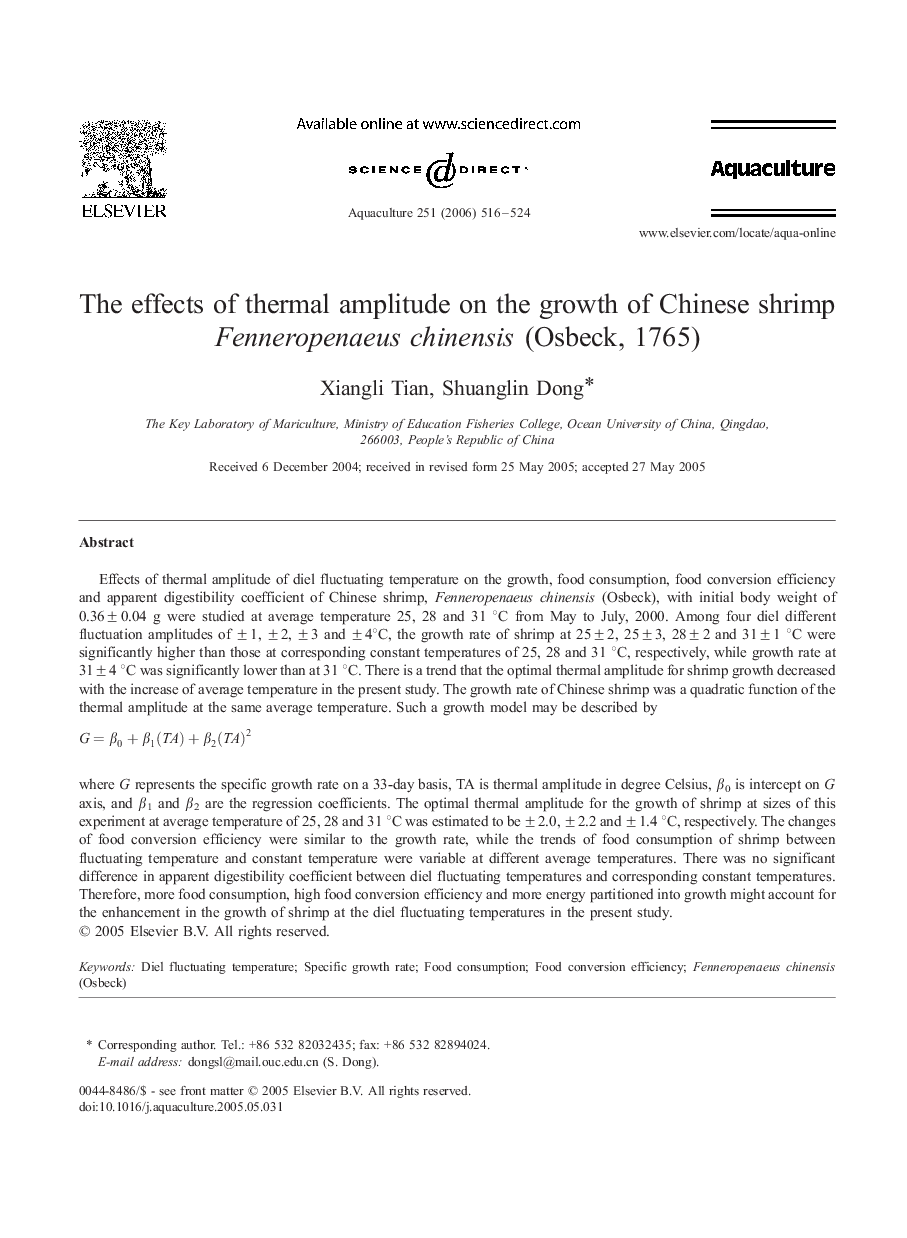| کد مقاله | کد نشریه | سال انتشار | مقاله انگلیسی | نسخه تمام متن |
|---|---|---|---|---|
| 2426335 | 1552990 | 2006 | 9 صفحه PDF | دانلود رایگان |

Effects of thermal amplitude of diel fluctuating temperature on the growth, food consumption, food conversion efficiency and apparent digestibility coefficient of Chinese shrimp, Fenneropenaeus chinensis (Osbeck), with initial body weight of 0.36 ± 0.04 g were studied at average temperature 25, 28 and 31 °C from May to July, 2000. Among four diel different fluctuation amplitudes of ± 1, ± 2, ± 3 and ± 4°C, the growth rate of shrimp at 25 ± 2, 25 ± 3, 28 ± 2 and 31 ± 1 °C were significantly higher than those at corresponding constant temperatures of 25, 28 and 31 °C, respectively, while growth rate at 31 ± 4 °C was significantly lower than at 31 °C. There is a trend that the optimal thermal amplitude for shrimp growth decreased with the increase of average temperature in the present study. The growth rate of Chinese shrimp was a quadratic function of the thermal amplitude at the same average temperature. Such a growth model may be described byG=β0+β1(TA)+β2(TA)2G=β0+β1(TA)+β2(TA)2where G represents the specific growth rate on a 33-day basis, TA is thermal amplitude in degree Celsius, β0 is intercept on G axis, and β1 and β2 are the regression coefficients. The optimal thermal amplitude for the growth of shrimp at sizes of this experiment at average temperature of 25, 28 and 31 °C was estimated to be ± 2.0, ± 2.2 and ± 1.4 °C, respectively. The changes of food conversion efficiency were similar to the growth rate, while the trends of food consumption of shrimp between fluctuating temperature and constant temperature were variable at different average temperatures. There was no significant difference in apparent digestibility coefficient between diel fluctuating temperatures and corresponding constant temperatures. Therefore, more food consumption, high food conversion efficiency and more energy partitioned into growth might account for the enhancement in the growth of shrimp at the diel fluctuating temperatures in the present study.
Journal: Aquaculture - Volume 251, Issues 2–4, 28 February 2006, Pages 516–524